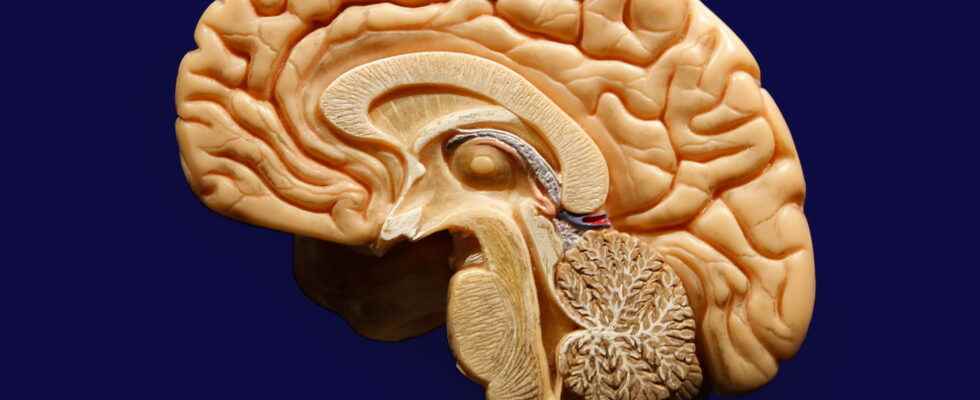Leigh syndrome refers to a rare and progressive genetic neurological disease that causes damage to the central nervous system. What are the symptoms ? Life expectancy ? The treatment ?
Definition: what is Leigh syndrome?
THE Leigh syndromealso called subacute necrotizing encephalomyopathyis a rare and progressive genetic neurological disease which is characterized by degeneration of the central nervous system, more particularly brainstem and basal ganglia. The prevalence is estimated at 1/36,000 births. There are different forms of Leigh’s disease. “The classic form usually manifests in infants or small children, most often before the age of two years. However, some forms may appear much later and appear in adolescence or even adulthood. We talk about a syndrome because it is originally a description of radiological abnormalities associated with clinical symptoms that reflect a malfunction of the central nervous system.“, develops Dr. Nathalie Guffon, doctor in charge of the reference center for hereditary metabolic diseases at the University Hospital of Lyon.
What is the cause of Leigh’s syndrome?
They all have in common a malfunction of the mitochondria, the energy factories of our cells.
Leigh syndrome includes a set of fairly complex pathologies which fit into mitochondrial diseases. If there are several etiologies, they all have in common poor functioning of mitochondria, the energy factories of our cells, scattered throughout the body, due to an anomaly in the genetic material. “In the event of alterations in the classic genetic material found in the cell nucleus, the disease will appear in a child whose two parents are healthy carriers. It can also bea mutation of the mitochondria’s own genetic material which is transmitted only by the ovum, in which case it is either an accident at the time of conception or maternal transmission (Leigh syndrome with maternal inheritance)”details the specialist.
What are the symptoms of Leigh syndrome?
Symptoms depend on the severity of the disease. The classic form, which begins in infants or small children, essentially results in:
- hypotonia (the infant cannot hold his head up in the most serious forms),
- a delay in motor acquisitions or even a regression of the latter over time,
- balance disorders,
- swallowing disorders,
- vomitings.
Other neurological signs may appear:
- involuntary eye movements,
- paralysis of certain eye movements,
- breathing difficulties of cerebral origin.
- In addition to these neurological symptoms, there may be cardiac, renal or hepatic damage.
- In less severe formstypical symptoms are often neurological signs with balance disorders, coordination disorders and retinal damage.
What is the evolution of Leigh syndrome?
Leigh’s syndrome evolves towards a deterioration of the general state which is not necessarily linear. “Acute deterioration can be observed, often triggered by a trivial infection, sometimes with partial or total recovery, until the next deteriorationn”, informs the specialist.
In addition to the suggestive clinical signs, the diagnosis is based on brain MRI which will highlight characteristic lesions of the central gray nuclei and the brainstem. Lactate levels are always too high in the cerebrospinal fluid, and often in the blood. The etiological diagnosis is based on the demonstration of enzymatic deficiency and/or genetic abnormalities.
What is the treatment for Leigh’s syndrome?
There is no specific cure for Leigh syndrome. Vitamins like thiamin (vitamin B1), vitamin B2 and coenzyme Q10 can be proposed to try to make the small links of the mitochondria work best. In certain deficits, it can also be recommended to make A ketogenic dieti.e. very high in fat and low in sugar.
What is the life expectancy with Leigh syndrome?
The prognosis of Leigh syndrome is very severe with survival rarely exceeding a few years after the onset of symptoms.
Thanks to Dr Nathalie Guffon, pediatrician in charge of the reference center for hereditary metabolic diseases at the Hospices Civils de Lyon
